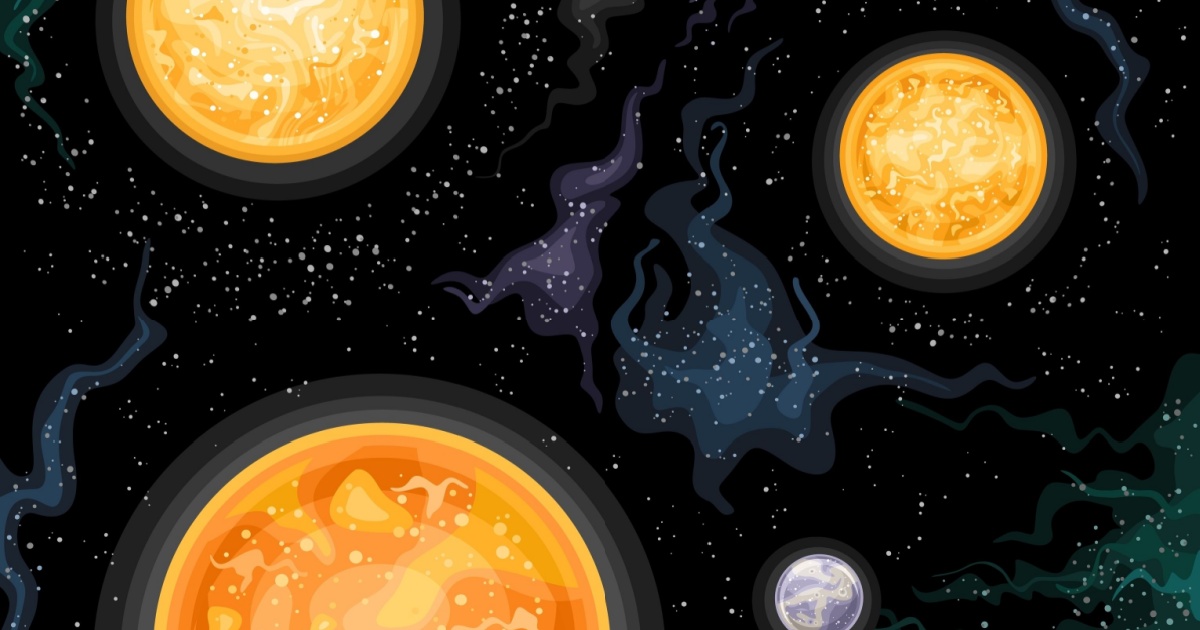
Shutterstock
There are billions (or more) planets in the universe. Some of them orbit around a sun like Earth, and others are shooting through interstellar space. Some are gaseous, and some are rocky; some are huge, and some are pretty small. What almost all of them have in common (except those in our own solar system) is that they are pretty hard to find.
Planets don’t give off their own light like stars do, which makes them very difficult to see when they are out in the darkness of space. When they are near their own star, they are often washed out by the brightness of the star itself. So, finding any star is difficult and exciting.
Recently, astronomers used the James Webb Space Telescope to look at the area around Alpha Centauri A, which is the star closest to us (other than our own sun). They hoped to confirm that there was indeed a planet orbiting it.
This is a big challenge because the Alpha Centauri star system actually has three stars in it, which means more light, which makes finding planets hard. The team, however, thinks they have found a gas giant orbiting its star, and have published two new studies, which will be published in the Astrophysical Journal Letters (Study 1, Study 2).

Shutterstock
They are not yet certain that they are correct, but their findings represent a big step toward proving the existence of this gas giant, which happens to be within the habitable zone of its star. Elisabeth Matthews is an astrophysicist at the Max Planck Institute for Astronomy in Germany. She gave a statement to Scientific American about these studies, saying:
“If it’s real, it’s amazing. The authors work hard to make a case for why this, frankly, small and faint blob of light is believable, but I think there are still some open questions that need to be answered to really be 100 percent sure.”
There are many reasons why this would be such a big discovery if proven. First, the fact that it is so close (by universal standards). It is just four light-years away. Next, Alpha Centauri A is a star that is roughly the same age as our own sun, and almost exactly the same size at just 1.1 solar masses. With this planet being within the habitable zone, it could offer some important insights.
Gas giants aren’t typically thought of as being able to support life, but you never know. The planet itself, if it is real, would have a similar mass to Saturn and a similar radius to Jupiter. Even if life is very unlikely on this planet, however, there is a high chance that the planet has one or more moons. These moons could have a makeup that supports life.
Co-author of the study, Aniket Sanghi, is a researcher at Caltech. In a statement about the work, he said:
“If confirmed, the potential planet seen in the Webb image of Alpha Centauri A would mark a new milestone for exoplanet imaging efforts. Its very existence in a system of two closely separated stars would challenge our understanding of how planets form, survive, and evolve in chaotic environments.”

Shutterstock
Additional study will be needed to hopefully confirm (or rule out) the existence of this exoplanet in the future. This can’t be done until the planet is in a position within its orbit where it is most likely to be visible to one or more of the telescopes currently available to researchers.
If you thought that was interesting, you might like to read about a quantum computer simulation that has “reversed time” and physics may never be the same.
Categories: NATURE/SPACE
Tags: · aliens, alpha centauri a, Alpha Centauri System, exoplanet, finding planets, james webb telescope, planet, science, single topic, space, top

